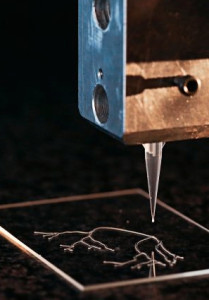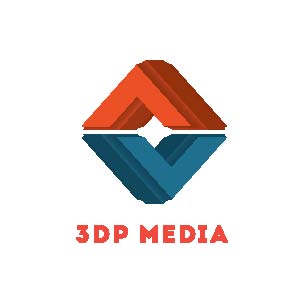When America’s intellectual, culture-critiquing and meme-tracking magazine of record among the cognoscenti prints 5,000 words (24 November ish) touting your idée fixe—OK: my commercial and common-good hobbyhorse of HCx3DP (Healthcare Multiplied By 3D Printing)—you know you’ve arrived. Savor the moment…and then get back to work spreading the word. Lives are at stake: quite literally…!!

Illustration from “The New Yorker” article “PRINT THYSELF: How 3-D printing is revolutionizing medicine,” 24 November 2014 issue. Caption: “A 3-D printer used by researchers at Harvard University’s Wyss Institute creates a model vascular network.” (Image courtesy of Lori K. Sanders.)
[Link here to read The New Yorker article: “PRINT THYSELF: How 3D Printing Is Revolutionizing Medicine.”
3D Printing in Medicine – The New Yorker, Nov 24, 2014]
+++
Now, you might accuse me of hype with the last statement in my [red-text] sub-head above. But, wait… Here’s a short preview of an important story I’ll present in one of my next posts here. That article will be entitled: “Health by (3DP) Design: Worrell Helps Span The Gap Between Patient-Generic & Patient-Specific With New ’3D IM’ Solutions.”
+++
[Preview Excerpt:]
On 30 October, separate sector-leaders Stratasys (3D printers) and Worrell (medical-device design)—near geographic neighbors in metropolitan Minneapolis, MN—proclaimed their collaboration around educating and accessing the medical-device marketplace. Their disruptive tool of choice is new 3DP innovation in the long-established, industrial processes of injection molding. As Stratasys states, “Worrell slashes lead times by a game-changing 95% in comparison to traditional tooling, with costs plummeting 70%.” This while mitigating risk for both practitioner and device manufacturer—via very-early feedback and quick iteration in the product-development cycle.
By dint of its dramatic cost reductions, Worrell’s 3D IM will also democratize medical device development. Based on a 2010 study by a Stanford University team—entitled “FDA Impact on U.S. Medical Technology Innovation”—the average cost to bring a high-risk Class III device to market is $94 million. For a Class II device, it is $31 million. 3D IM 3D-printed injection molds empower prototype development—using final production materials—for a fraction of the cost. This process can deliver actual finished parts in a matter of days—compared to the typical eight-week lead-time associated with traditional tooling processes.
In human terms, what is the potential value of this saved time? Ultimately, it is saved lives. Worrell’s innovative 3D IM production system will help get life-saving medical devices to market quicker.
To add perspective to that statement, consider this hypothetical case. For millions of people with severe allergies, ordinary foods and everyday events—such as a bee sting—are life-threatening emergencies. The FDA (in “Food Allergies: What You Need to Know”) estimates that anaphylaxis to food in the U.S. results in 30,000 emergency room visits, 2,000 hospitalizations and 150 deaths each year.
Anaphylaxis can be fatal within minutes. So, fast and effective emergency-medical intervention by the untrained is crucial. An at-hand drug injector—capable of immediately delivering a life-saving dose of the drug epinephrine—can mean the difference between survival and death for allergy sufferers.
Worrell worked with Intelliject (recently renamed Kaleo) to redesign the epinephrine pen. Together, they created a user-friendly, epinephrine delivery system the size and shape of a credit card. At the time of the project, 3D IM was not available to rapid-prototype the product. This meant that longer, traditional tooling methods had to be used to develop the device.
Worrell’s 3D IM would have accelerated the product development process, bringing the device to market sooner. If this device had rolled-out just two months sooner—as a result of the delivery-accelerating 3D IM process—approximately 5,000 emergency room visits, 333 hospitalizations and 25 deaths might have been avoided.
+++
[The complete post---which contains this excerpt---is a profile of Worrell Design, an holistic American design firm in medical devices. I further focus on its new "3D IM" injection molding system. 3D IM is a hybrid of innovative 3DP and novel tooling uses in injection molding...]
C’mon Back!
LAND

 NYC3DPLand Tweets
NYC3DPLand Tweets
Pingback: Check out the HCx3DP Meetup to learn how 3D printing is disrupting healthcare - Technically Brooklyn
Pingback: Check out the HCx3DP Meetup to learn how 3D printing is disrupting healthcare – Technical.ly Brooklyn | 3d printer supplies now